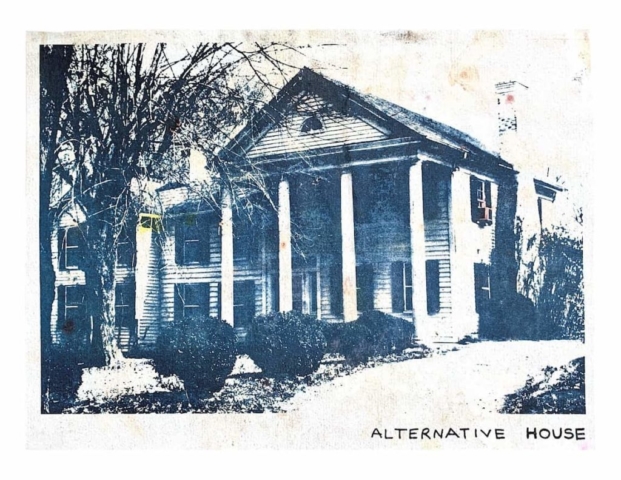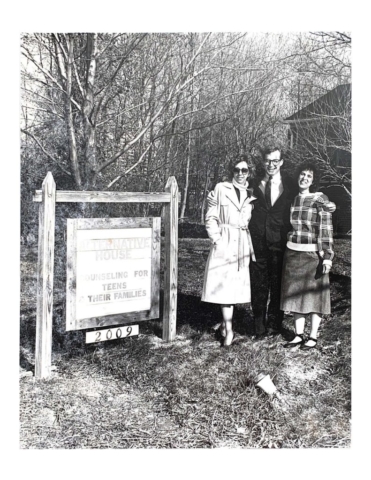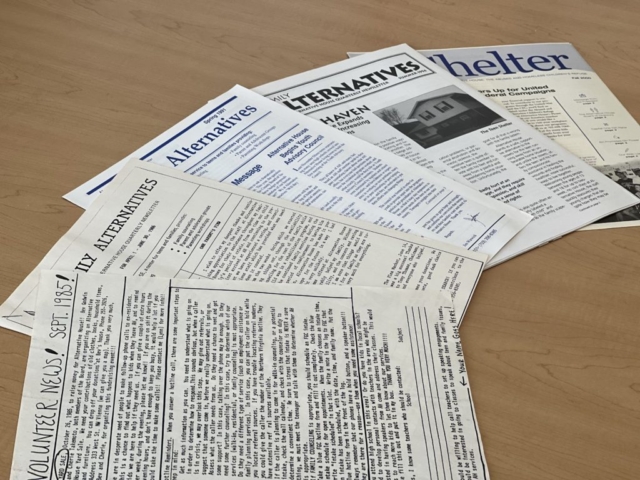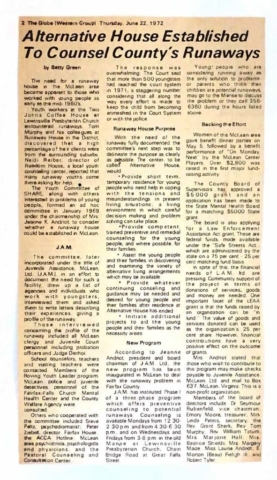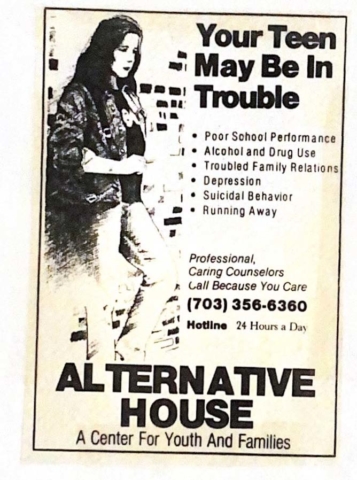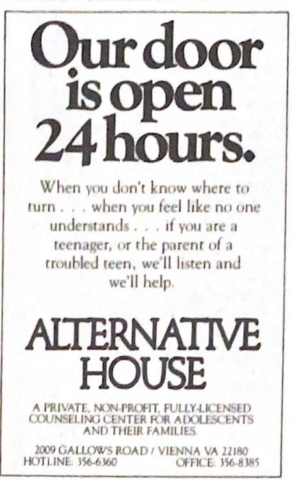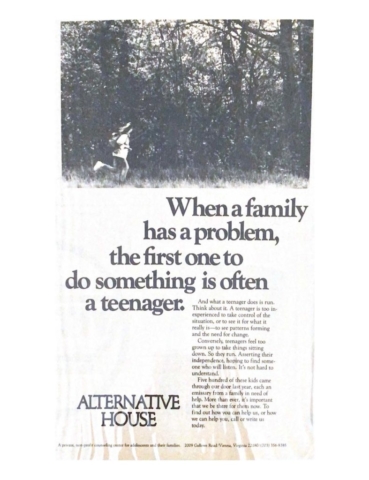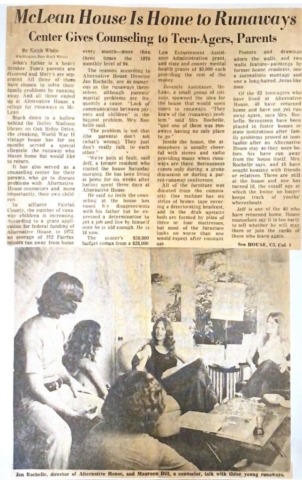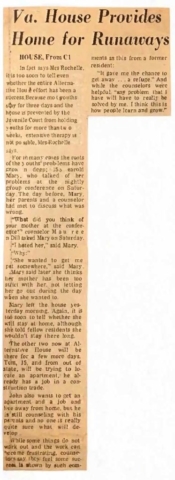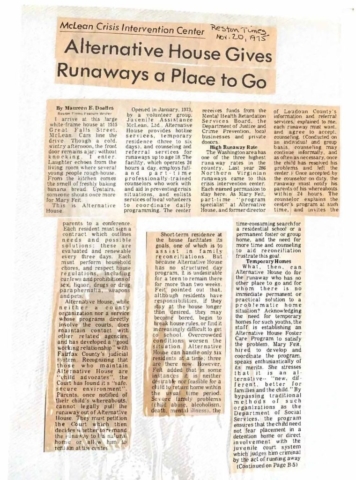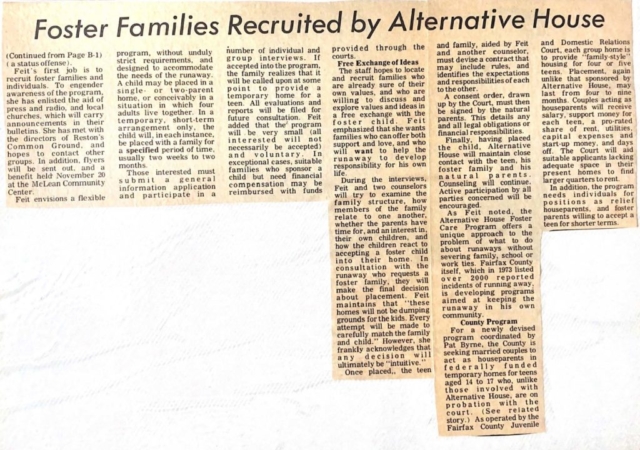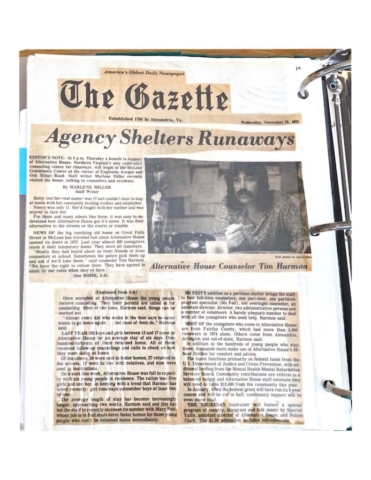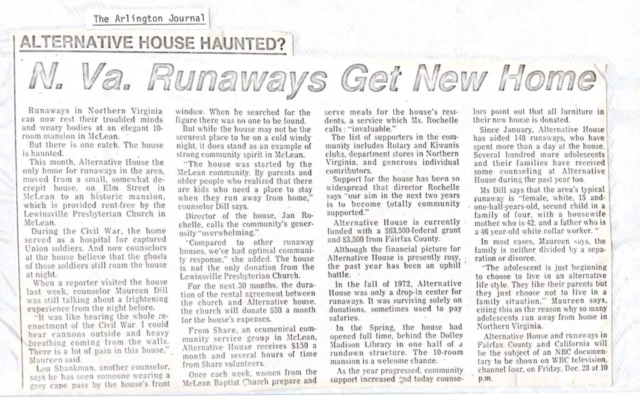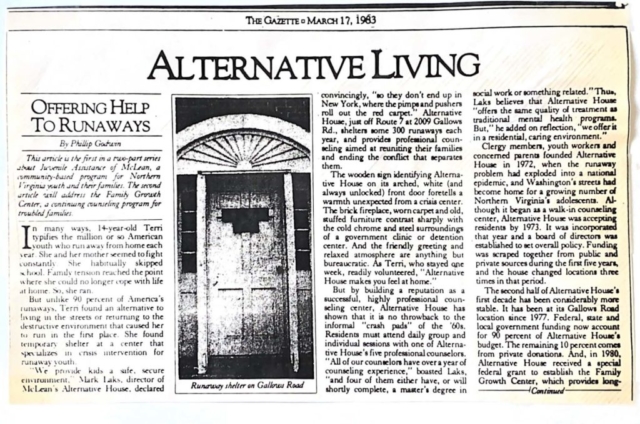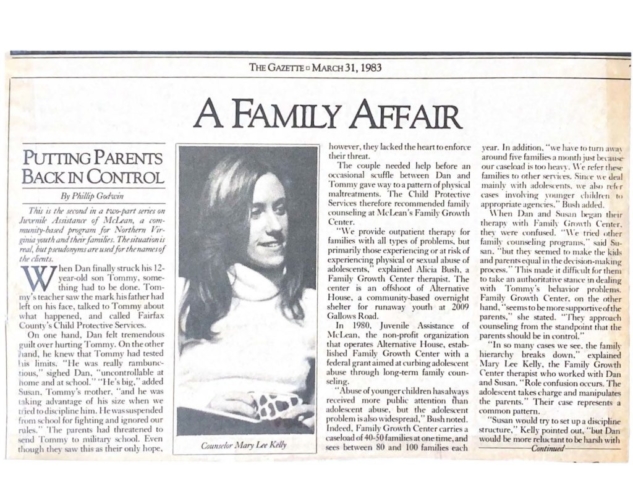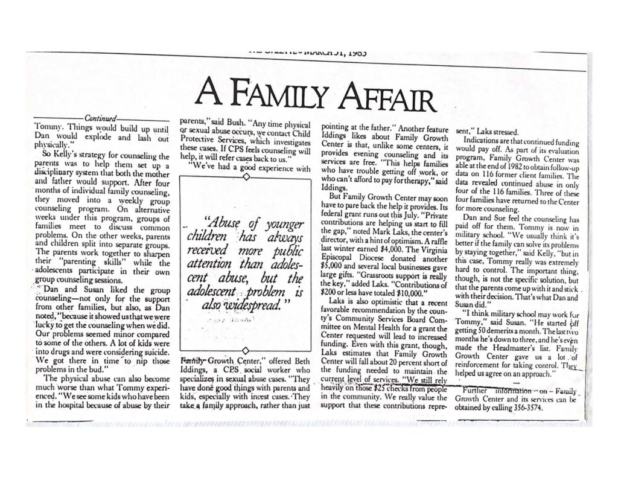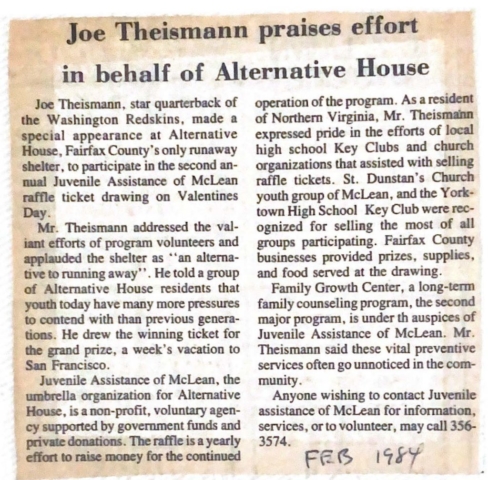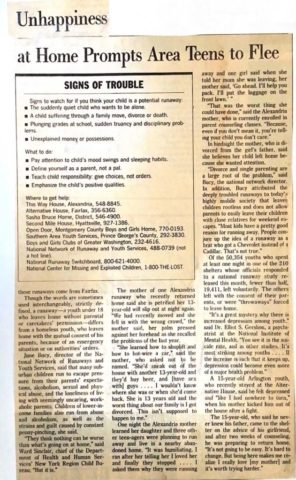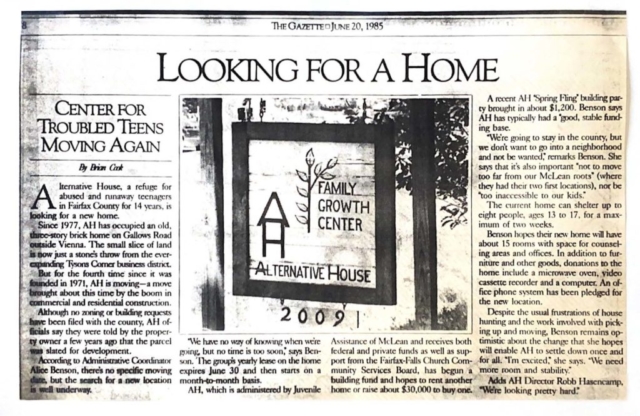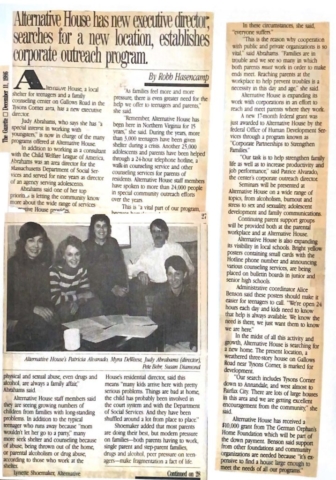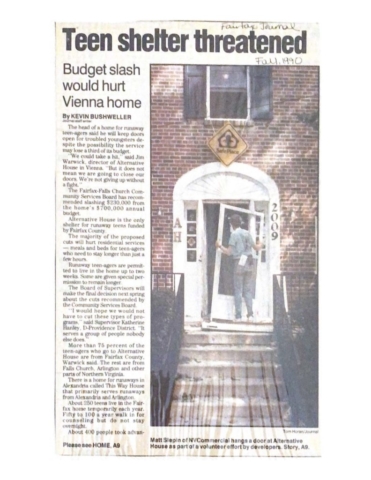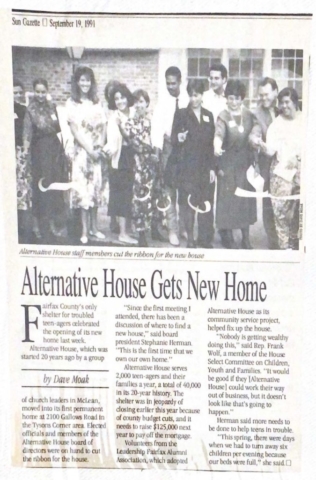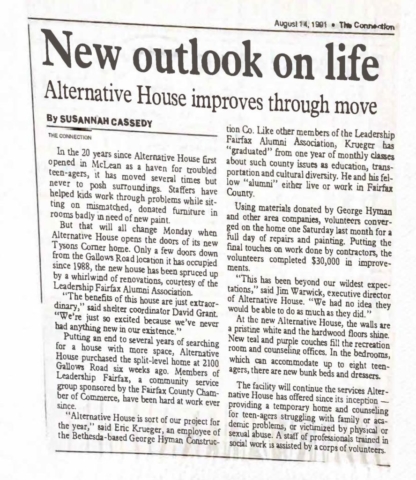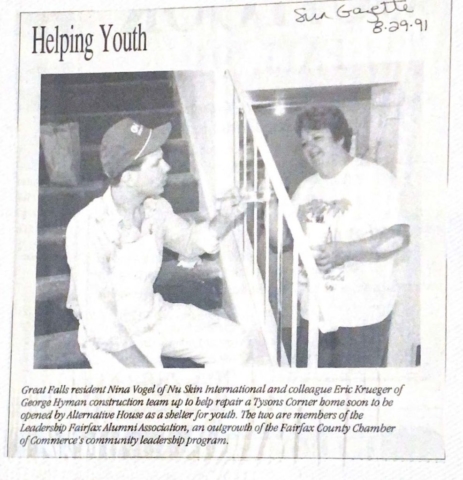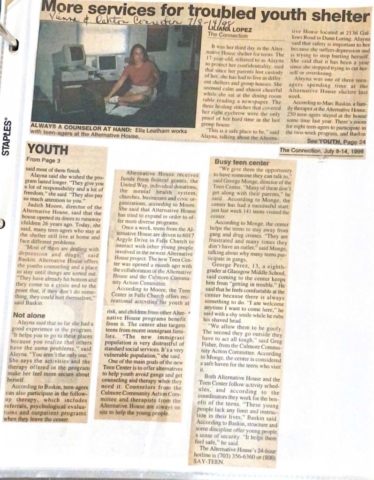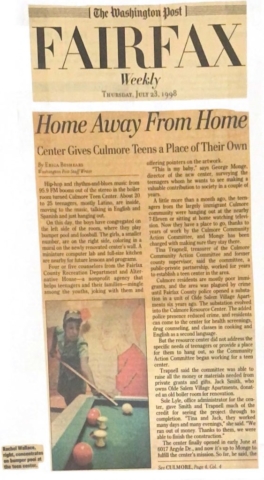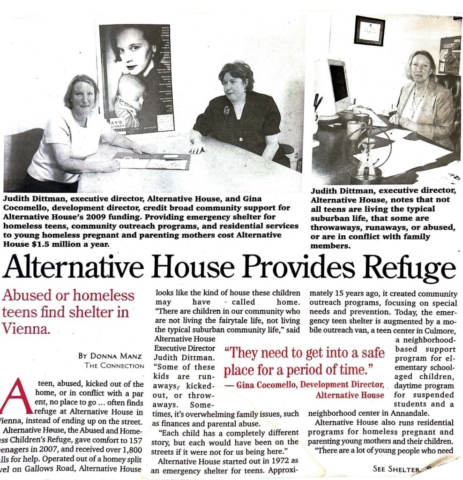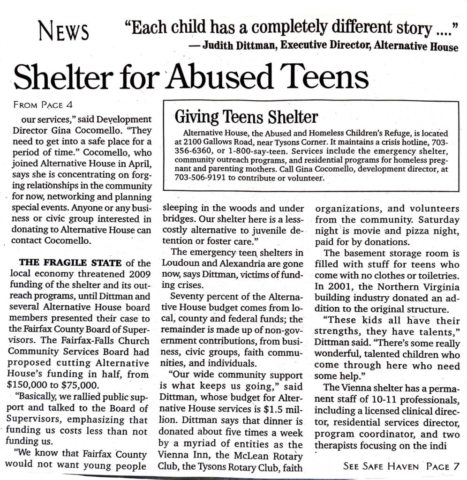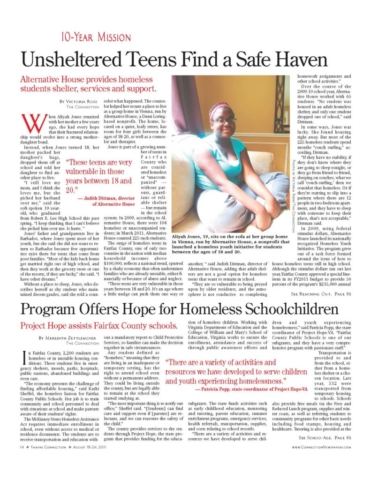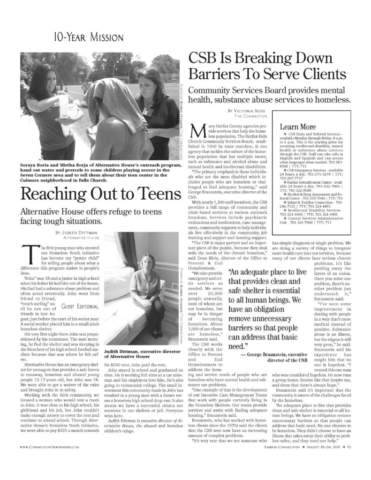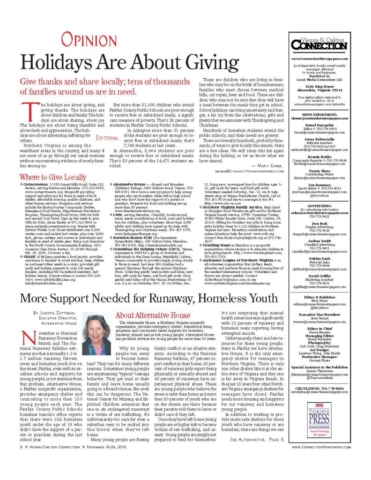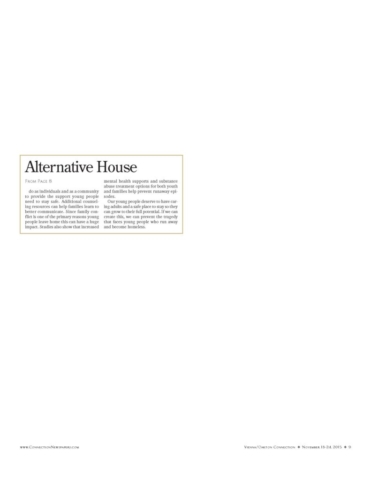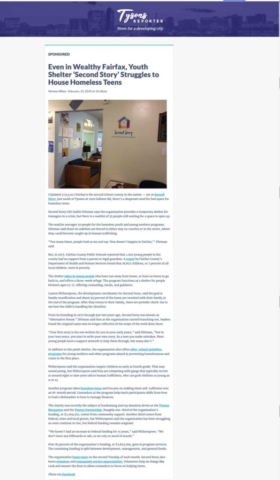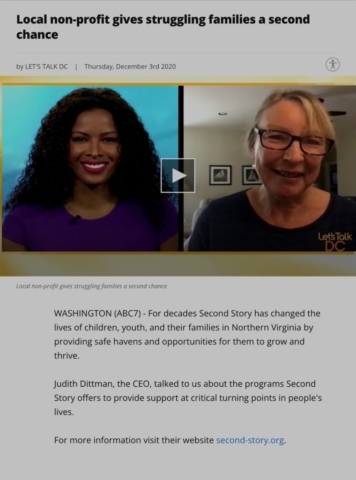Second Story is proud to celebrate 50 years of helping youth write their second stories. We couldn’t have reached this important milestone without you! Who better to share our story and a special message than our CEO, Judith Dittman, who has led the way for Second Story for 27 years.
After watching Judith’s video message, take a stroll through history by visiting our interactive timeline. Click through the decades to read about our journey. In addition to our timeline, we’ll have more surprises in the months ahead, so come back often to continue the celebration.
Second Story’s Interactive Timeline–click through the decades
1970s
1971
A “coffee house” project was started on “an experimental short-term basis” at McLean Baptist Church, as reported in the 1971 Annual Report for local group SHARE, Inc. This coffee house provided interaction between adults and youth. Youth in crises began interacting with local adults, prompting the adults to seek a way to help them.
1972
“Juvenile Assistance of McLean” starts offering safe housing to teens in a trailer on the grounds of Lewinsville Presbyterian Church, calling it “an Alternative House.” Jan Rochelle is the director of Alternative House.
1973
The annual budget of Alternative House in 1973 is $71,675.
1974
Alternative House was already handling “thousands of emergency telephone calls,” according to the Youth Committee Report in 1974. Joe Fidelli becomes the director of Alternative House.
1975
Alternative House is described as “a three-phased program consisting of preventative counseling, temporary in-house residence, and follow-up” in the SHARE, Inc. newsletter.
1976
Nearly 300 youth were served in 1976, and counselors conducted 1,500 individual and 250 family sessions, according to the annual report.
1980s
1980
“The staff at Alternative House consists of a director, four full-time counselors, a night resident counselor, administrative coordinator, a family counselor, and a volunteer coordinator who supervises 30 volunteers from the local community,” according to an Alternative House brochure.
1984
Juvenile Assistance of McLean formally changes its name to “Alternative House,” its most popular program. The Executive Director is Robb Hasencamp.
1989
Jim Warwick becomes the Executive Director of Alternative House.
1989
What was then called “the Emergency Shelter for Teenagers” (now Second Story for Teens in Crisis) moves from its former location at 2009 Gallows Road to its current location at 2100 Gallows Rd, Vienna, Virginia.
1990s
1990
Alternative House begins its Street Outreach Program to reach out to young people in crises in Fairfax County, beginning its Community-Based Services program with just three counselors in the Culmore, Springfield, and Route 1 areas offering food, clothing, supplies, counseling, and support.
1994
Kaleidoscope, a 90-day residential program for children ages five to 12 who experienced severe abuse, opens its doors. It was an effort to reach children who by their profile and experiences were more likely to come to the Emergency Shelter as they got older.
1997
The first Transitional Living Program for young people experiencing homelessness, 16 to 21 years old, opens.
1998
Judith Dittman becomes the Executive Director of Alternative House.
1998
Alternative House expands its Community-Based programs by opening the Culmore Teen Center to provide recreational and educational services to young people in the 7th through 12th grade.
2000s
2000
The first Transitional Living Program closes due to a loss of funding.
2001
Home Aid is established in Northern Virginia by the Northern Virginia Building Industry Association. Their first project is a major renovation of Alternative House’s Emergency Shelter for Teenagers. Home Aid completely remodeled the interior of the home which was deteriorating after 20 years of hard use. They also doubled the square footage of the house and added a basement to store needed supplies. Following the renovation we were able to house two young people in each a room instead of four youth in each small bedroom.
2002
Alternative House opens a new transitional living program, Assisting Young Mothers (now Second Story for Young Mothers), and begins providing safe havens, support, and services to pregnant and parenting young women, ages 16-24, experiencing homelessness.
2004
The Culmore Safe Youth Project opens to provide drop-in after-school services to youth in grades four to six.
2006
The Annandale Safe Youth Project opens to provide drop-in after-school services to youth in grades four to six.
2009
The Homeless Youth Initiative (now part of Second Story for Homeless Youth) opens in partnership with Fairfax County Public Schools to help homeless high school students who are without the support of a parent or guardian.
2010s
2012
The second Transitional Living Program opens in 2012, expanding the Homeless Youth Initiative so that young people ages 18-22 can get the support they need to walk the path to productive adulthood.
2013
Culmore and Springfield Neighborhood Initiatives contracts awarded, expanding the services available to families and communities in Culmore and Springfield.
2014
Springfield Safe Youth Project opens to provide drop-in after-school services to youth in grades four to six.
2017
Alternative House changes its name to “Second Story” and begins writing a new narrative to expand upon its mission of serving youth in need.
2020s
Second Story’s Digital Scrapbook–page through our album
Since 1972, Second Story (formerly Alternative House) has helped youth write their second stories. Page through our digital scrapbook to view news articles, photos, and other memorabilia. These are actual photos of pages from Second Story’s albums, so image quality may vary.


